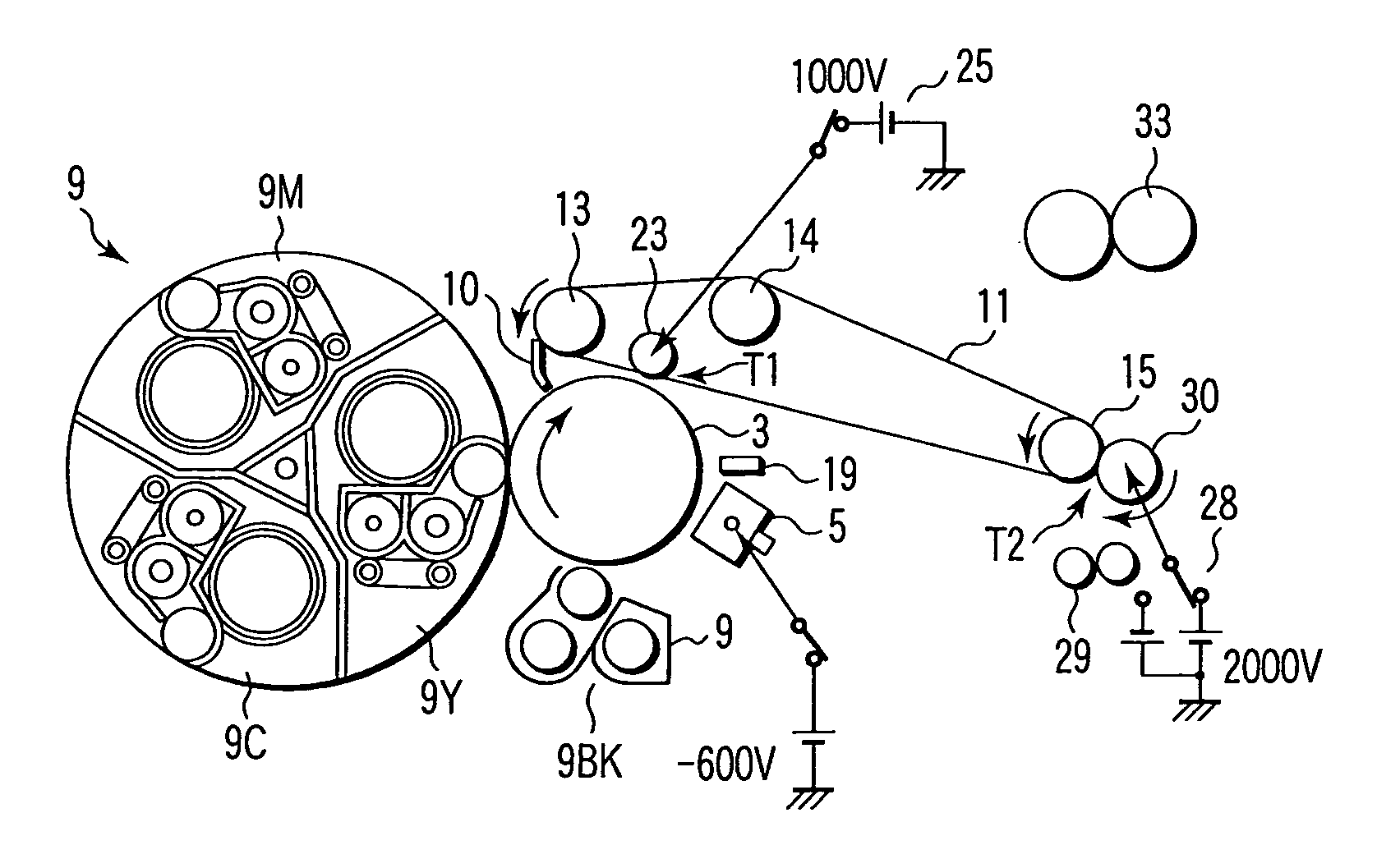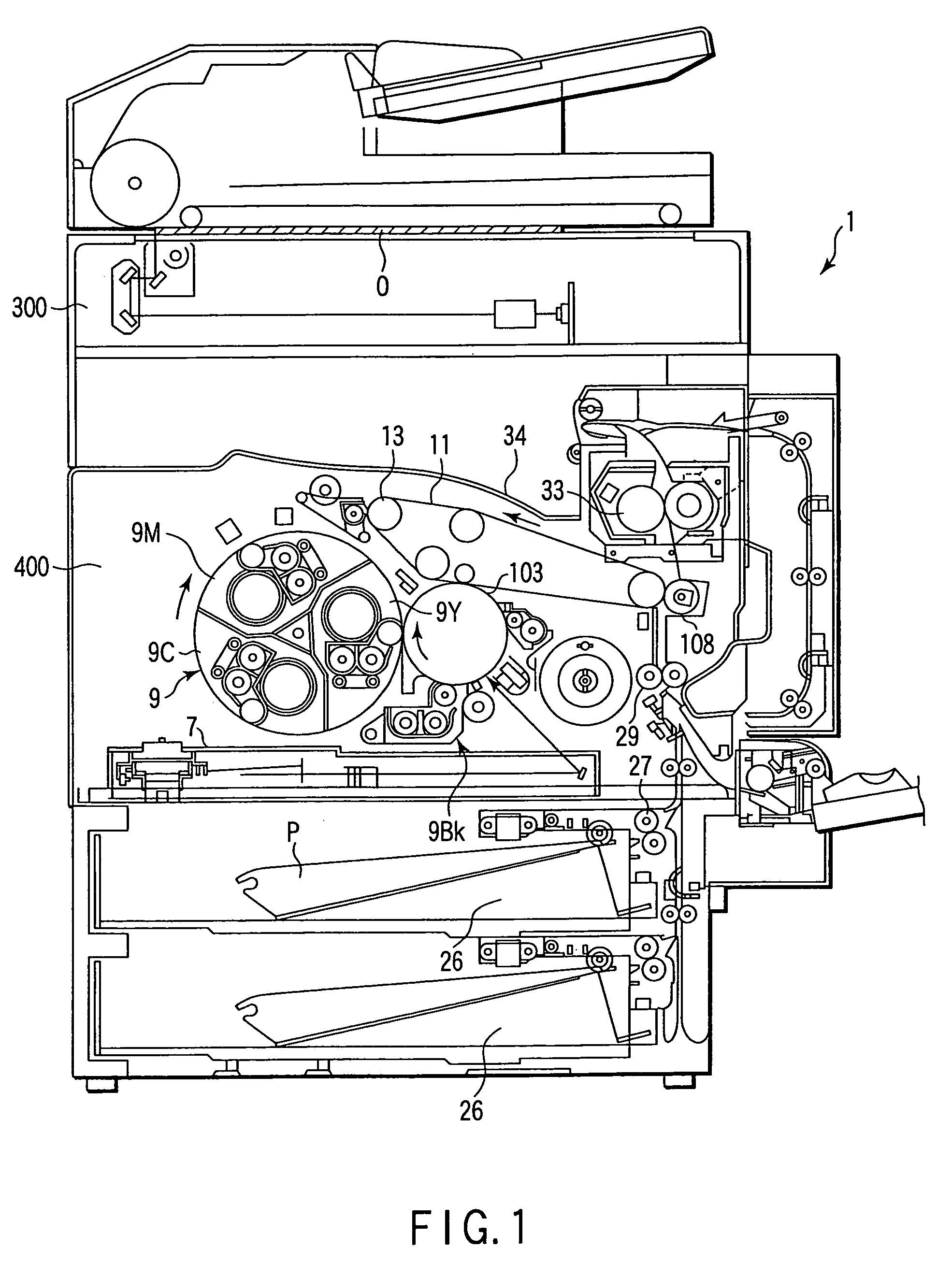Image forming apparatus
a technology of image forming apparatus and forming roller, which is applied in the direction of electrographic process apparatus, instruments, optics, etc., can solve the problems of secondary transfer roller smeared with toner, rear side of paper output, and toxic ozone production
- Summary
- Abstract
- Description
- Claims
- Application Information
AI Technical Summary
Benefits of technology
Problems solved by technology
Method used
Image
Examples
first embodiment
[0060]FIG. 6 shows a schematic configuration of the present invention.
[0061]The secondary transfer roller 30 has a mechanism whereby the secondary transfer roller 30 is in or out of contact with the intermediate transfer belt 11 by use of a cam or the like. This is characterized by a configuration in which when the secondary transfer roller 30 is out of contact with the intermediate transfer belt 11, the secondary transfer roller 30 contacts a cleaning brush 50. The cleaning brush 50 is, for example, a rotating roller type brush of φ 17 mm. The secondary transfer roller 30 contacts the intermediate transfer belt via the paper only when transferring the toner image on the intermediate transfer belt onto the paper, and at other times, the secondary transfer roller 30 is positioned to be out of contact and is basically hardly smeared.
[0062]When a problem is caused in paper conveyance and paper is not conveyed as usual in the secondary transfer (when a so-called jam is caused), the tone...
second embodiment
[0068]FIG. 9 shows a schematic configuration of the present invention.
[0069]A constant positional relationship is always kept between the secondary transfer roller 30 and the cleaning brush 50, and the roller 30 is not in a contacting / separating relationship with the brush 50. In other words, the secondary transfer roller 30 is in or out of contact with the intermediate transfer belt 11, and the secondary transfer roller 30 and the cleaning brush 50 operate integrally.
[0070]The secondary transfer roller 30 and the cleaning brush 50 are respectively driven by the driving sections 30M and 50M so that a relative peripheral velocity will be 0 (their peripheral velocities and direction thereof will be the same at the contact position T3) in an ordinary operation, and the roller 30 and the brush 50 do not slip on each other. Therefore, the brush 50 has a minimized effect of scratching the smear on the secondary transfer roller.
[0071]When the jam is caused and the secondary transfer roller...
third embodiment
[0073]FIG. 10 shows a schematic configuration of the present invention.
[0074]In the present embodiment, the same bias voltage is applied to the cleaning brush 50 and the secondary transfer roller 30. In other words, the same potential is always applied to the secondary transfer roller 30 and the cleaning brush 50 so that the electric field is not produced therebetween. This makes it possible to prevent the extra toner from entering into the brush 50.
[0075]When the jam handling sequence is performed, a positive / negative bias voltage is alternately applied to the brush 50 similarly to the secondary transfer roller 30. In this case, it is preferable that the brush fiber is conductive, and its electric resistance is within a range of 105 Ω to 108 Ω. For example, it can be produced from fiber in which carbon is dispersed in nylon or acrylic.
[0076]The third embodiment may also be used in combination with the embodiments described above, but the effect is obtained as one embodiment.
PUM
 Login to View More
Login to View More Abstract
Description
Claims
Application Information
 Login to View More
Login to View More - R&D
- Intellectual Property
- Life Sciences
- Materials
- Tech Scout
- Unparalleled Data Quality
- Higher Quality Content
- 60% Fewer Hallucinations
Browse by: Latest US Patents, China's latest patents, Technical Efficacy Thesaurus, Application Domain, Technology Topic, Popular Technical Reports.
© 2025 PatSnap. All rights reserved.Legal|Privacy policy|Modern Slavery Act Transparency Statement|Sitemap|About US| Contact US: help@patsnap.com



